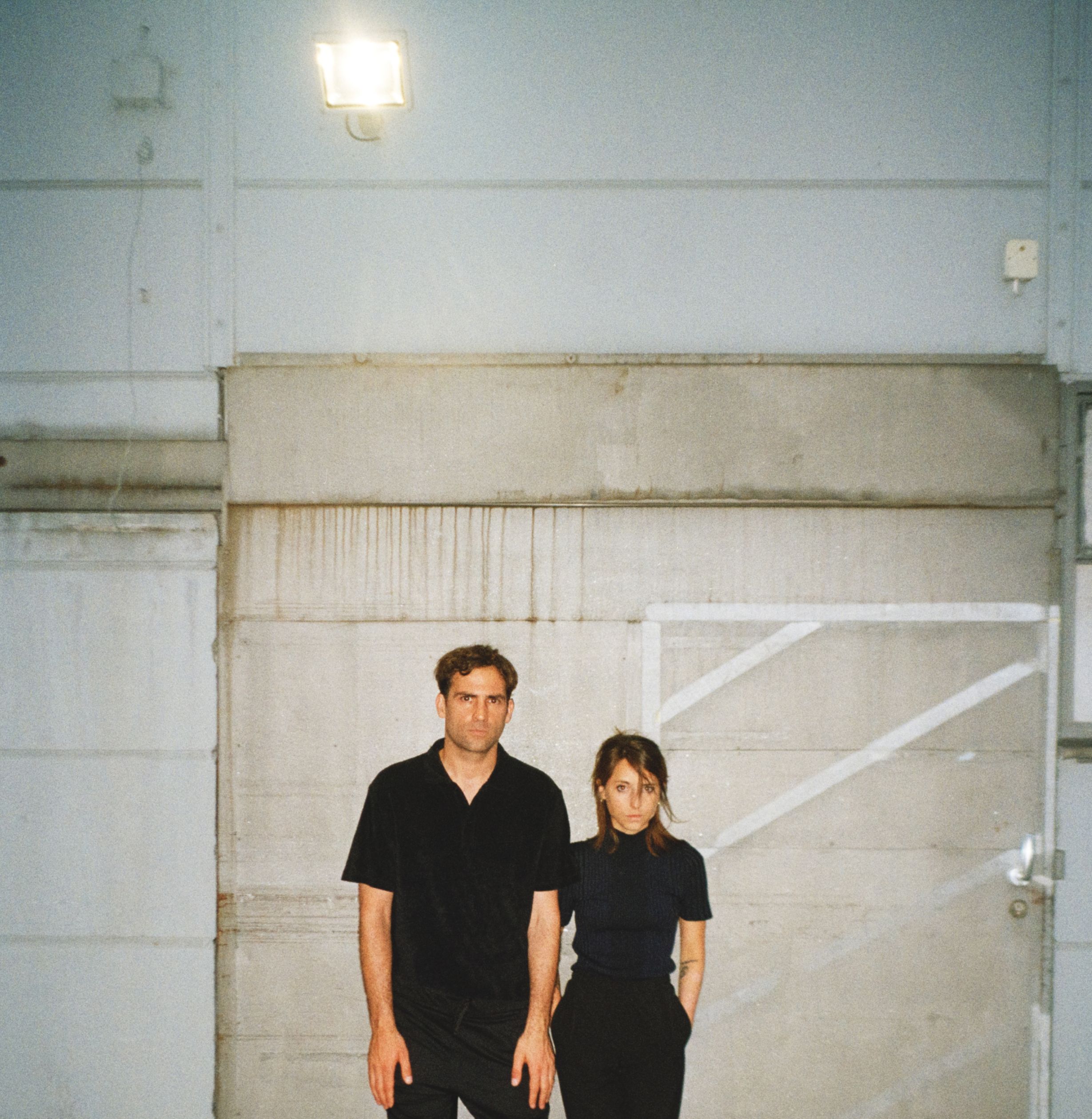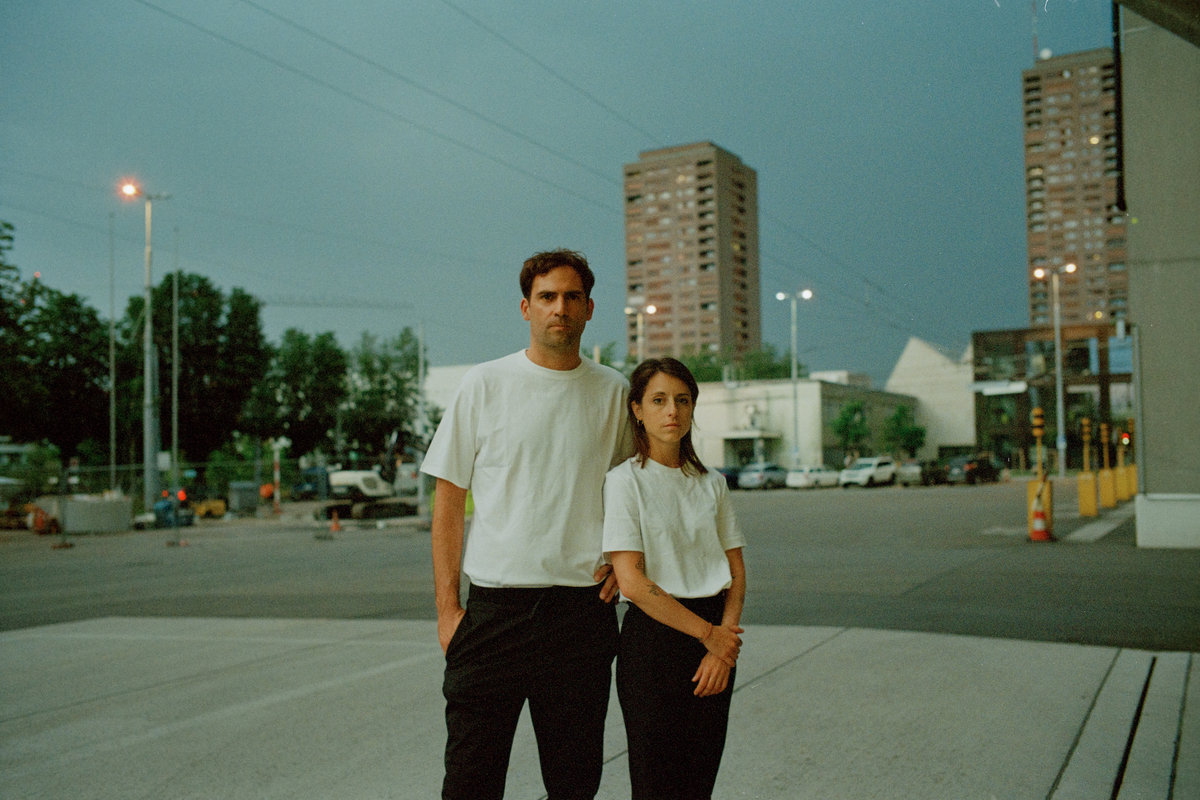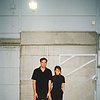Name: Musique Infinie
Members: Manuel Oberholzer aka Feldermelder, Noémi Büchi
Nationality: Swiss
Occupation: Sound artists, composers, producers
Recent Release: Musique Infinie's soundtrack to Alexander Dovzhenko’s silent movie Zemlya (Earth) is out via Hallow Ground.
If you enjoyed this Musique Infinie interview and would like to stay up to date with the duo and their music, visit their official website.
For a deeper dive:
[Read our Noémi Büchi interview]
[Read our Noémi Büchi interview about sound]
[Read our Noémi Büchi interview about sound as matter and “late-futuristic symphonics”]
[Read our Feldermelder interview]
[Read our Sara Oswald + Feldermelder interview]
You've described EARTH as a re-narration or re-negotiation of Dovzhenko's movie Zemlya. Quite a few interviews with film music composers have emphasised how different these two artforms are. So how did that work and what does “narration” in music mean compared to “narration” in film?
Noémi: I think we wanted to translate a (collective) feeling rather than a clear narrative. Even if that meant for us a mere approximation of this feeling, as we neither lived at that time nor grew up in that culture.
But the movie conveys very strong emotions and sensations about topics like change, fear, doubts, progress, culture, religion and society. This very strong energy and tension inspired us a lot, especially from a musical point of view.
And I think that was also very fitting as an accompaniment to the narrative. Because you can play with moods much better, as they are not as fixed as a script with a concrete text. The messages, feelings and sensations are usually very differentiated and also of a subjective nature. In other words, this is very much in line with the musical principle of variation. Our artistic freedom was therefore much more flexible.
Prior to this project, were there live performances of soundtracks that you both particularly enjoyed?
Noémi: Actually this was the very first time for us together to perform for a movie. I did it once already alone for the Stadtkino Basel, it was also an old silent movie from the US.
Luckily, we recorded the performance, because we never thought we could create such a finished work with it. It was all pure improvisation. We only really got into the movie at the moment of the concert. We didn't want to think too much about it or analyse it in advance. So our immediate musical decisions and structure were very spontaneous and direct, which makes this soundtrack even more unique.
We could never recreate this again.
Manuel: I’ve been part of another live soundtracks that got released - Hidden in Kaoris Castle - and one was released on -OUS. And I did some with Kohei Matsunaga / Nhk Koyxen on a tour in China. Good friends of us run an event Series based on this concept.
So I’ve seen plenty very good ones and a couple very bad ones that stay with me.
In terms of scores and soundtracks, what are approaches/composers that you respect and find inspiring for your own work? Did these influence your process for EARTH in any way?
Noémi: We cannot say that we have concrete (human) sources of inspiration.
What inspires us above all is humanity as a whole, as a holistic phenomenon, with all its facets. We are guided by our intuition and our shared understanding of music, and we trust this at every moment of the improvisation. That's why improvised live shows are what give us the most artistically and humanly. This piece is also very different than everything we did so far.
But of course there are film composers who fascinate us, such as Ennio Morricone, Ben Frost, Ryuichi Sakamoto,... to name just a few.
Manuel: I grew up with Italian movie soundtracks. Giallo movies (Goblin, Morricone and others). It was my window to the world. So generally for me soundtracks have a big life outside of the movie itself. It’s not because.
If a feeling transpires in a movie or image it probably exists in the world. So a good soundtrack is just more music.
Tell me a bit about what interests you about the movie and how you see its relevance today.
Manuel: We discovered the movie just prior to the performance. But just really understood its beauty while we were scoring it.
While playing you enter this state of millisecond observation and rhythm feel so you see and discover all the details in the movie and it's underlying pace, sense and intention. We just became a translator of how the movie made us feel in that moment. So it was relevant to us then.
Besides that on a broader level, the movie provides a wonderfully slow paced strong look into human behavioural aspects that questioned a filmmaker then, and us today. While the shapes and forms might have changed, Zemlya provides a strong look into the eternal question of “process but to what price” and il its impact on our fears and reactions.
What do you still remember about your initial live performance of the soundtrack?
Manuel: That we underestimated how intense 80 min of live scoring are going to be, besides that. I am still super excited about this recording and what came out of it. Every time I listen to it I get transported to that moment.
Noémi: This was the first and the last one :-) Unique on all levels.
Musique Infinie Interview Image by Jean-Marc Avila
I have always been intrigued by improvisation, but improvising a movie score has always felt slightly paradoxical because one element of the equation is entirely fixed (the movie itself!). What do you think you're responding to, and how much of such a performance is actually still spontaneous and “in the moment”?
Manuel: As mentioned above we discovered the movie just prior to scoring and just clicked a bit through it, to see what the mood was. We didn’t have the time to watch it completely. so for me at least, most scenes were in its details completely surprising.
And as we more prepared in the sense of what instruments we use instead of what we were going to play it felt more like a first date with the movie.
Noémi: Like I described just before, we trust our common aesthetics and musical understanding. Of course, every moment is a surprise, but we've never got into a situation musically where we didn't know what to do or how to proceed.
We know how to listen to each other, how to give each other space, how to exchange ideas without talking. Our improvisation works in a very intuitive way.
Another interesting thing about your live performance is that you may have had different emotional responses to the film. How would you describe these and how did you navigate these differences to still come up with something coherent?
Noémi: Even if they were different at some point, we could understand each other in this specific topic of this film. Because we worked with the tensions, with the camera work, the shots, the symbolics and people's facial and corporal expressions.
Manuel: I think the movie makes a very strong case for itself. The feeling it emits is very distinct, and in the end we can interfere, changing and enhancing this glow.
Prior to sitting down for the LP version, how did you decide on which parts of the performance to continue with and which to no longer use?
Noémi: We actually did very little editing. In fact, we didn’t change the music at all.
The only moments we took out were minimalistic passages with a lot of rhythmic "material elements", in the sense of Musique Concrète. We found these appropriate during the film, but for the record we wanted to focus primarily on the dense, orchestral and less abstract moments.
Manuel: So in a way we just a selected our personal musical essence and view of the of the entire score. It’s the disco maxi version :).
There are some incredible choir voices on the B-side of the LP. Unless it's a sensitive issue, where were these taken from?
Noémi: We sampled some sounds of the version of the movie we received, yes.
Manuel: Not sure if it’s from the original, as the original probably didn’t have a score delivered with it. So i’ts a recording of a choir from a much earlier scoring of the movie that we reused and transformed.
We wanted to keep this in a very minimalistic way to bridge the ages and techniques just for the charm of it. And it has this special eerie timbre that we enhanced further.
Musique Infinie Interview Image by Jean-Marc Avila
What was the process of creating the music for EARTH like? Was it one uninterrupted improvisation? Or was the album culled from multiple takes? Was all of it created while the movie was running?
Noémi: Yes. We just had some prepared material, such as these voices from the original movie, or synths that we’ve decided to use for this performance. Everything else was pure improvisation.
Manuel: Just a little discussion beforehand on what could be interesting acoustic palette. But it got different than we discussed, so ...
Describe the state of “togetherness trance” that you mentioned in the press release. What happens in this state that could not happen in a “solo trance?”
Manuel: I think it’s all about listening. Listening to each other and listening to the movie and the moment. You can transmit what you need through the instruments. Talking is for later. First just experience it. There is not much to say besides that.
Noémi: This is what I described above, our ability to communicate without talking. It’s playing together, listening to each other, flying together somehow :-) Difficult to explain.
The press release mentions that you rarely use words when you're making music. Why not?
Noémi: Because words would break this fluency and this other, more abstract level of communication.
After the sessions, what is your take on what changes if you “compose” the soundtrack in a studio session versus performing it live?
Manuel: In a live performance the solution has always to be in front of you and in the now.
In the studio it might come next week and can have many faces.
How do you see the relationship between image and sound for this particular project?
Noémi: We see images like sculptures or paintings, with colours, shapes, textures. Things that you can translate into music.
Manuel: As mentioned before, images that touch me radiate this certain kind of “there is no escape” feel that direct me towards something very specific, that I know how it sounds like but can’t have a word for it.
This is the beauty about sound and image. That they can describe many emotions and feelings and fears at the simultaneously, what words and language fail to achieve.
Not to diminish anything. But we lack the words to express this instant highway of information hitting our brains.
The title of your duo literally means “Unfinished music.” Do you always see music as unfinished, as part of a process? What could potentially "end" this process?
Noémi: Of course, music never ends, and the artistic process never ends. I think dying finally does it, like we do ourselves —- unless this music continues to be heard after we die :-)
Manuel: Music has this fascinating side of being a personal journey between objects, people and yourself. When we chose the name a lot of things were going on. And it felt apropriate to tie our fates to this concept. To help weave this infinite restructuring of music . It is the only thing I really want to do. Maybe also that I can do :).
So until the end of me and beyond.






